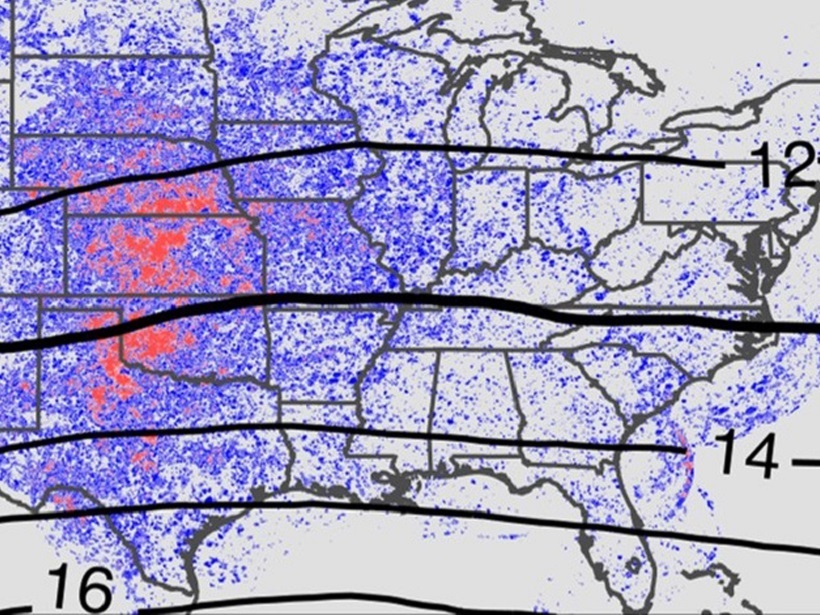Source: Journal of Geophysical Research: Atmospheres
Deep summertime continental convection can lift boundary-layer air directly into the upper troposphere–lower stratosphere (UTLS), but measurements of tropopause-penetrating convection are limited to field campaigns or low vertical resolution satellite data. Cooney et al. [2018] provide an analysis of deep convection over North America that extends above the tropopause, based on synthesis of high-resolution, three-dimensional gridded radar reflectivity fields. Such an analysis at high spatial and temporal resolution has not been done before using NEXRAD or any other dataset. Overshooting primarily occurs during May, June, and July over the central United States, with likely impacts on composition of the lower stratosphere. These data have the potential to refine our detailed understanding of convective influence on the UTLS.
Citation: Cooney, J. W., Bowman, K. P., Homeyer, C. R., & Fenske, T. M. [2018]. Ten year analysis of tropopause-overshooting convection using GridRad data. Journal of Geophysical Research: Atmospheres, 123, 329–343. https://doi.org/10.1002/2017JD027718
—William Randel, Editor, JGR: Atmospheres
Text © 2018. The authors. CC BY-NC-ND 3.0
Except where otherwise noted, images are subject to copyright. Any reuse without express permission from the copyright owner is prohibited.

